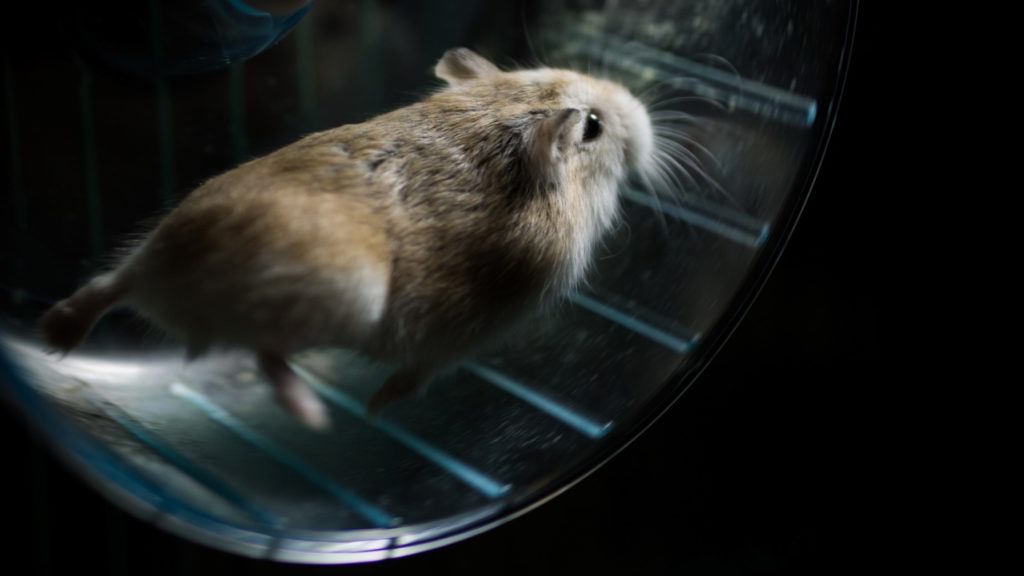Phenotyping of disease models
A modern tool for assessment of pathological states and their temporal evolution.
Why it is important?
Non-invasive phenotyping offers a complete picture of disease progression and treatment efficacy. This approach is especially critical when working with disease models, which are often already affected by the disease induction itself. By eliminating the need for stressful restraining, or invasive procedures, it avoids to add further burden, minimizing the risk of animal loss and preserving valuable research models.
DECRO external telemetry solution is a valuable tool for chronic and acute studying of diseases in preclinical models. By allowing the monitoring of ECG morphological changes, ventilation, and locomotor activity patterns changes, it helps researchers better characterize pathological phenotypes and understand underlying pathophysiological mechanisms. This approach is essential for validating the translational potential of animal models to humans.
This approach allows for :
Continuous data collection: that can uncover subtle trends, detect early indicators of disease progression, and identify critical rare events (e.g arrhythmias).
Integrative physiology: monitoring of multiple physiological parameters, providing a holistic picture of the disease’s impact on the whole organism.
Longitudinal studies that track how animals respond to treatments over time, improving the translational potential of animal models for human therapies.
These detailed phenotypic characterizations help develop more accurate and reliable models, ultimately fostering drug development and personalized medicine.

Use Cases
Need support for evaluating your research model?
Our team is here to help.
Chronic Heart or Kidney Disease Models
In research related to heart disease, especially chronic heart failure, a wearable telemetry system can monitor key physiological parameters such as heart rate variability, ECG, and respiratory rate in real time.
For example, in animal models of heart failure (e.g., post-myocardial infarction or induced by drugs like doxorubicin), researchers can use wearable telemetry to evaluate cardiac remodeling over time based on ECG morphological and rhythmical changes.
In chronic kidney diseases, it allows the detection of associated cardiovascular and respiratory alterations, providing a better understanding of the systemic effects of renal dysfunction and its progression over time.
Metabolic Disease Models
For metabolic diseases like diabetes or obesity, wearable telemetry can monitor heart rate, spontaneous or forced locomotor activity levels, and physical stress response to gain insights into how these conditions affect daily life and overall health. For instance, in rat models of obesity, researchers can use telemetry data to track changes in exercise tolerance/resistance and cardiovascular health.
Neurological Disease Models
Although being secondary endpoints, cardiorespiratory and activity monitoring in neurological disease animal models, are useful to assess disease progression. Parameters, like heart rate variability, respiratory patterns, or activity levels, indicate autonomic and motor dysfunctions common in neurological disorders.
Example: In a rat model of Parkinson’s disease, a jacketed telemetry could track motor activity (such as tremors or difficulty in movement) and heart rate. The system could provide continuous data on how the disease affects the animal’s daily functioning and evaluate the effectiveness of experimental therapies, such as dopamine-replacement drugs.
Chronic and Infectious Respiratory Models
Wearable telemetry offers real-time, in-life functional respiratory assessment (e.g., tidal volume, flows, respiratory rates), making it highly relevant for studying the progression of both infectious respiratory diseases (like COVID-19 and influenza …), as well as chronic conditions such as sleep apneas, COPD, and asthma.
A key advantage of inductive plethysmography, a non-invasive telemetry method, is its ability to bypass the biases associated with restraint-based techniques like Whole Body Plethysmography Chambers. These traditional methods can mask or lessen pathological phenotypes by restricting animal activity and influencing inflammatory responses.
Example: Implementing respiratory infectious disease monitoring in a rat model can be achieved with minimal hardware, making it suitable for use in isolators or biosafety level laboratories. This can easily combine with minimally invasive data loggers to simultaneously track Temperature. This allows for continuous, accurate data collection even in highly controlled or secure environments.
Resources on Phenotyping in Disease Models
Jacketed telemetry in rats: a novel non-invasive method for cardiorespiratory phenotyping during treadmill exercise
Stephane Tanguy1, Agathe Cambier2, Leandro Fontana-Pires1,2, Timothe Flenet2, Charles Eynard2, Julie Fontecave-Jalon1, Pierre-Yves Gumery1 and François Boucher1 1 Universite Grenoble Alpes, CNRS, UMR 5525, VetAgro Sup, Grenoble INP, T IMC, 38000 Grenoble, France2...
Altered ECG parameters with loss of cardiac variability and prolonged QTc in a non-diabetic chronic kidney disease rat model
Matthieu Soulié1, Leandro Fontana Pires2, Agathe Cambier2, Ixchel Lima-Posada1, Frédéric Jaisser1 ¹ Inserm, UMRS 1138, centre de recherche des cordeliers, campus des cordeliers - Sorbonne université, Paris, France² Physiological monitoring instruments, ETISENSE SAS,...
Intérêt de la surveillance cardiorespiratoire non invasive chez le rat pour le raffinement de protocoles chirurgicaux
Intérêt de la surveillance cardiorespiratoire non invasive chez le rat pour le raffinement de protocoles chirurgicauxCambier A.1,2, Tanguy S.1, Flenet T.2, Boucher F.1 ¹ PRETA TIMC-IMAG, Université Grenoble Alpes, La Tronche² ETISENSE, Lyon, France 47th AFSTAL...
Evaluation of jacketed telemetry in rats for cardiorespiratory phenotyping at exercise
Evaluation of jacketed telemetry in rats for cardiorespiratory phenotyping at exerciseT. Flenet1 ; S. Tanguy2 ; A. Cambier1,2 ; E. Charles1 ; F. Boucher2 ¹ Biomedical engineering, ETISENSE SAS, Lyon, France; ² CNRS, timc-imag umr 5525, Université Grenoble Alpes,...
Explore Other Applications
Pharmacology and safety-toxicology
Assessment of the efficacy and toxicity of novel pharmacological compounds on cardiorespiratory and central nervous system (CNS) functions in rodent and non-rodent species using jacketed telemetry.
Monitoring of vital functions
Monitor the health status of your animals following a medical condition or surgery (e.g., cardiac stroke), or anticipate humane endpoints in severe procedures using jacketed telemetry — all while allowing a return to the home cage.
Education and Training
Learn physiology and pharmacology using jacketed telemetry on rehomed animals, or through a new digital approach with pre-recorded, on-demand datasets from cardiorespiratory studies.
Veterinary
Use wearable telemetry to monitor vital signs (heart and respiratory rates) or the development of medical conditions (e.g., cardiopathy), either at home or at the veterinary clinic.




